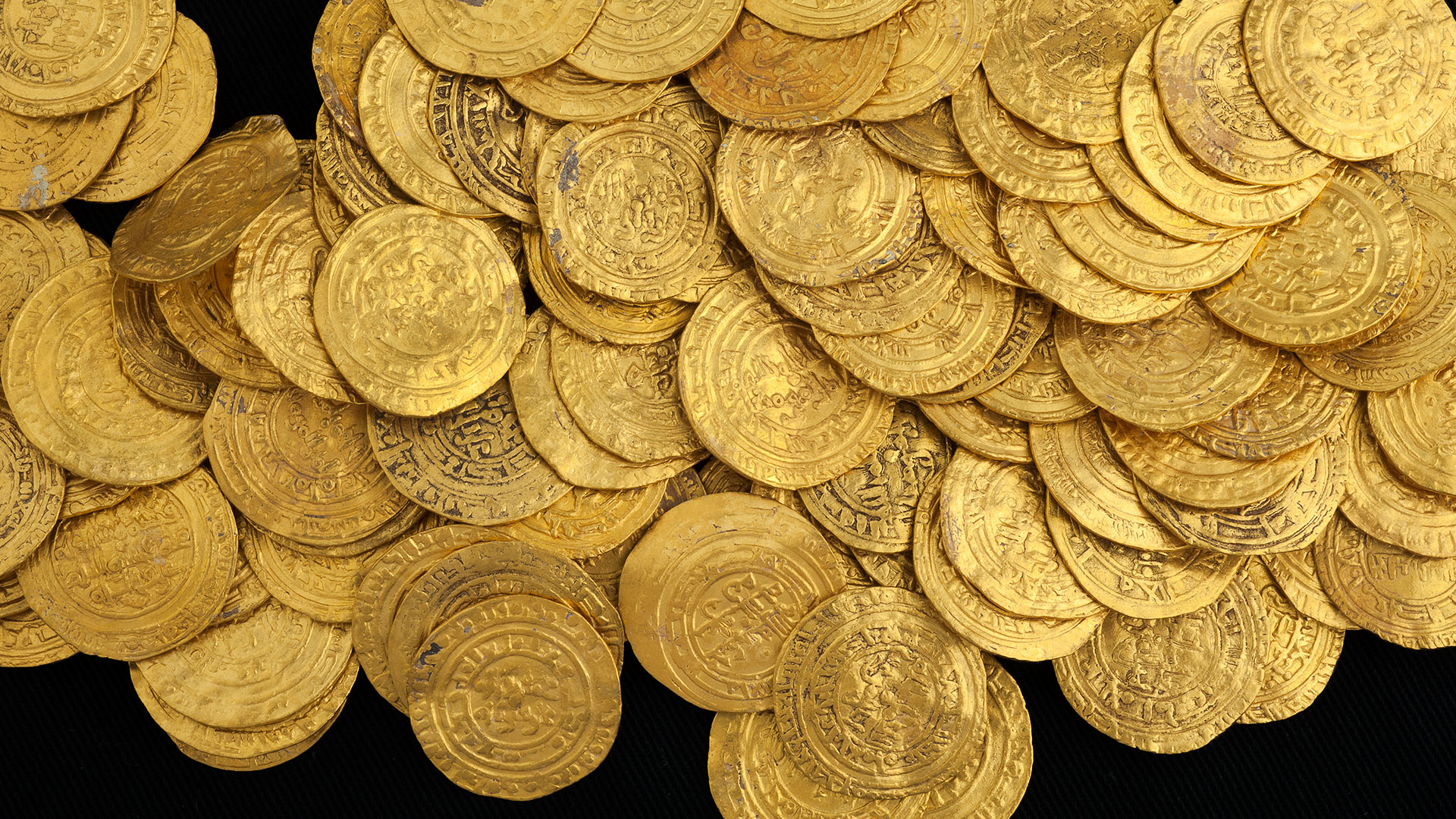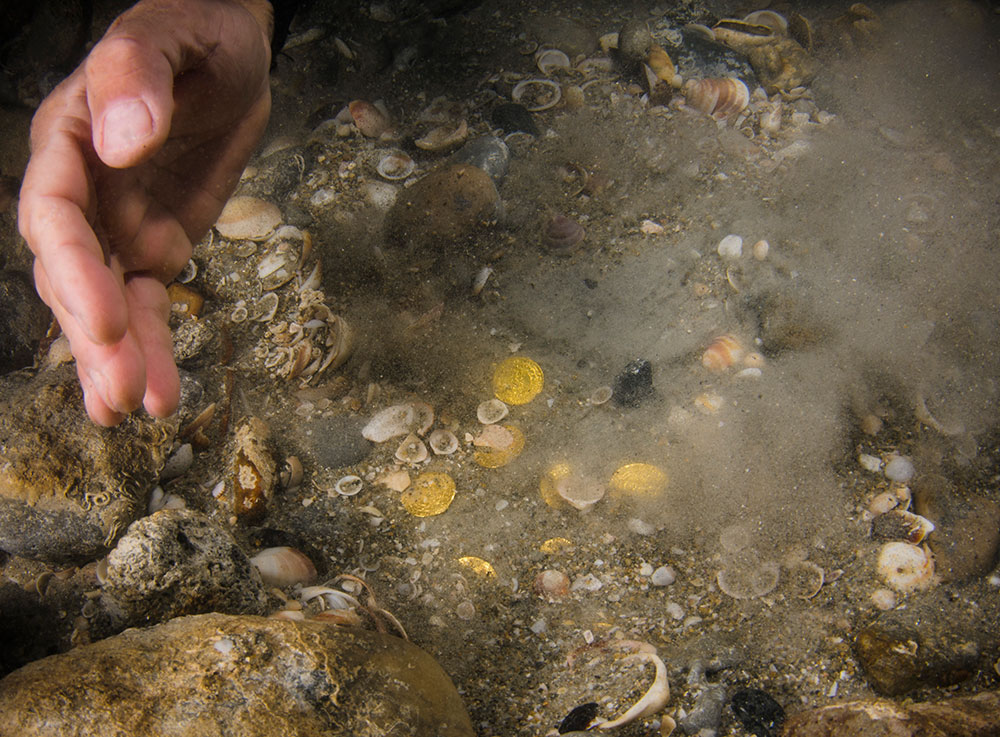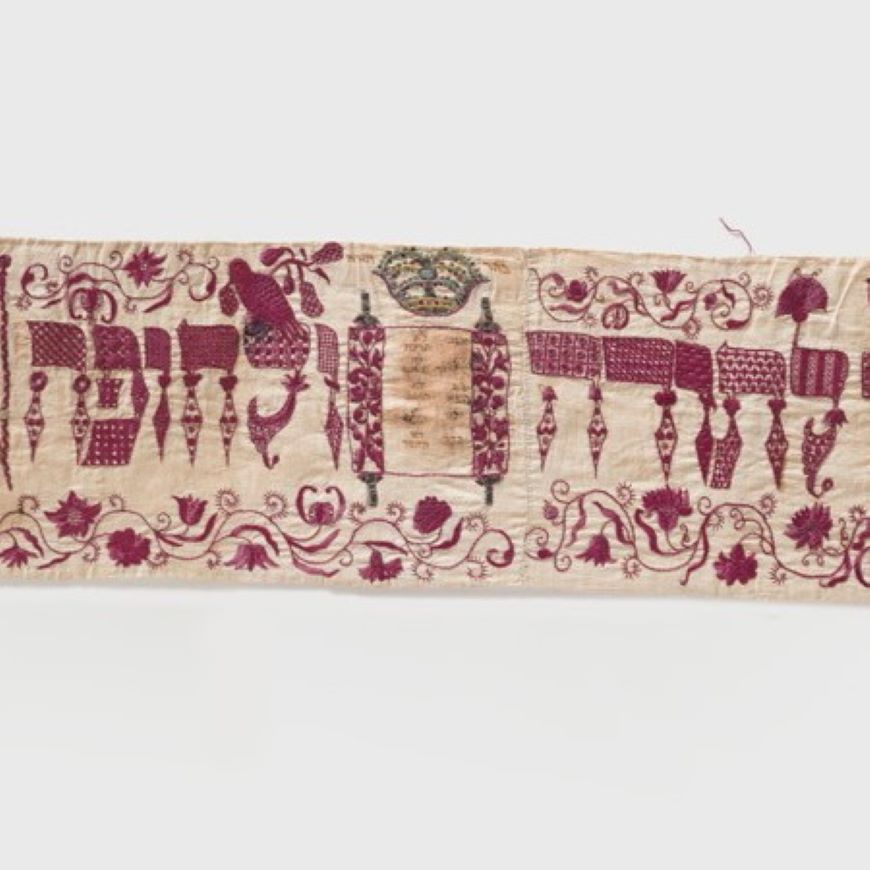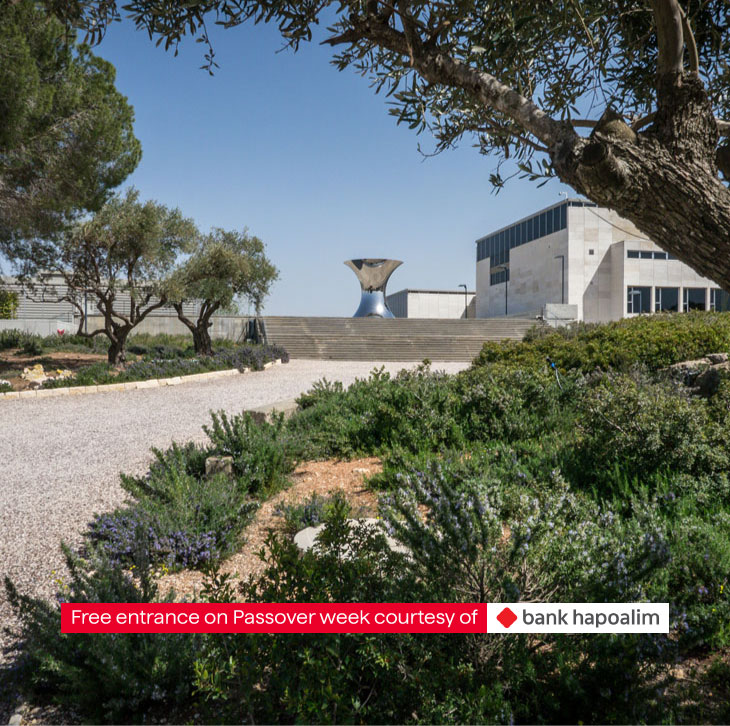
Gold from the Sea
Newfound Treasure from Caesarea
-
June 5 2015 - December 22 2015
Curator: Haim Gitler and Robert Kool
-
coin
In February 2015, divers off the coast of Caesarea spotted by chance a group of gold coins lying on the seabed. They immediately alerted marine archaeologists of the Israel Antiquities Authority, who conducted a salvage excavation at the site and recovered more than 2,580 coins of pure (24 karat) gold weighing a total of 7.5 kg.
The coins date from the mid-9th to the early 11th century CE. They were minted by the Fatimid caliphs of Egypt, who ruled over a vast empire stretching from North Africa in the west to Syria and Yemen in the east.
The treasure contains two types of coins: gold dinars weighing around 4 g each and gold quarter-dinars weighing 1 g. These were the most common coins of the period, as silver coins were rare and bronze coins were not used at all. The treasure might have been tax-money collected by a government official returning to Cairo, the capital of the Caliphate, when his ship was wrecked. Alternately, it could have been payment, perhaps meant for soldiers stationed in the Fatimid garrison of Caesarea, that was sent out from the capital but which never reached its destination.
Eleventh-century documents from the Cairo Genizah indicate that the salary of a craftsman at that time was approximately two gold dinars per month. Based on the number of coins found so far, the treasure would have been the equivalent of 1,200 months’ salary – a century of wages – or five and a half million shekels based on the minimum wage in Israel today.
The display is a joint project of the Israel Antiquities Authority, the Caesarea Edmond Benjamin de Rothschild Corporation and the Israel Museum, Jerusalem.

- Apr 14Apr 15Apr 16Apr 17Apr 18
- Mar 01Mar 08Mar 15Mar 22Mar 29Apr 05Apr 19Apr 26
- Mar 21Mar 22Mar 28Mar 29Apr 05Apr 19Apr 26
- Mar 17Mar 20Mar 24Mar 27Mar 31Apr 03Apr 07Apr 10Apr 21Apr 24Apr 28
- Mar 17Mar 24Apr 07Apr 21Mar 31Apr 28
- Mar 17Mar 20Mar 24Mar 27Mar 31Apr 03Apr 07Apr 10Apr 15Apr 16Apr 21Apr 24Apr 28
- Mar 24Mar 31Apr 07Apr 21Apr 28
- Mar 25Apr 01Apr 08Apr 22Apr 29
- Mar 25Apr 01Apr 08Apr 22Apr 29
- Mar 18Mar 25Apr 01Apr 08Apr 22
- Apr 22
- Apr 22
- Apr 22May 20Jun 19Jun 24
- Mar 06Mar 13Mar 20Mar 27Apr 03Apr 10Apr 17Apr 24
- Mar 06Mar 13Mar 20Mar 27Apr 03Apr 10Apr 17Apr 24
- Mar 06Mar 13Mar 20Mar 27Apr 03Apr 10Apr 17Apr 24
- Apr 24May 27
- Mar 20Mar 27Apr 03Apr 10Apr 14Apr 17Apr 24
- Mar 25Apr 24






















